Trees Birds Mammals Fish Amphibians Reptiles
Wild Algarve
Bookshop
Glanville Fritillary - Melitaea cinxia
Phylum: Arthropoda - Class: Insecta - Order: Lepidoptera - Family: Nymphalidae
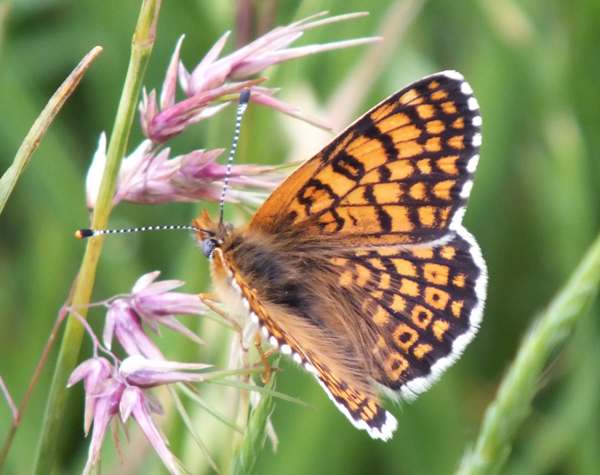
In the 1690s the first British record of capture of this butterfly, in Lincolnshire, was made by lepidopterist Lady Eleanor Glanville, who is now honoured in the common name of this species.
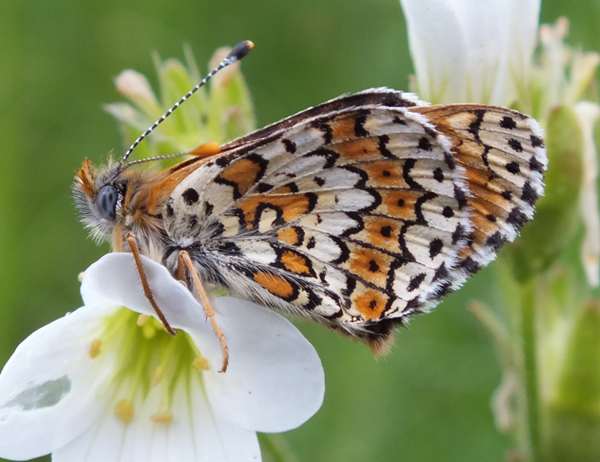
Distribution
Nowaday in Britain the Glanville Fritillary is restricted to a few sites near the Hampshire-Dorset border, on the isle of Wight, and in the Channel Isles. (What are considered to have been illegal introductions to a few locations in southern England have been responsible for other sightings in recent years.) On mainland Europe the Glanville Fritillary is common in many countries from southern Scandinavia down to the Mediterranean including northern Spain, France, Germany, Holland, Austria, Italy and the Balkans and eastwards into Asia.
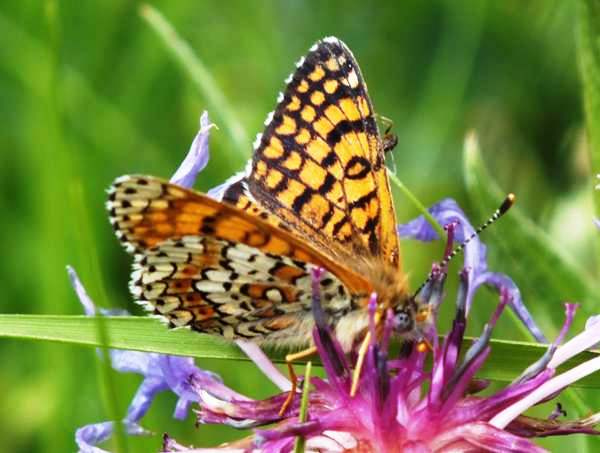
Habitat
This species is usually found most often in flower-rich grasslands including meadows, hillsides and coastal cliffs, but Glanville Fritillary is also seen in scrubland, on woodland edges, and along hedgerows and the margins of cultivated fields.
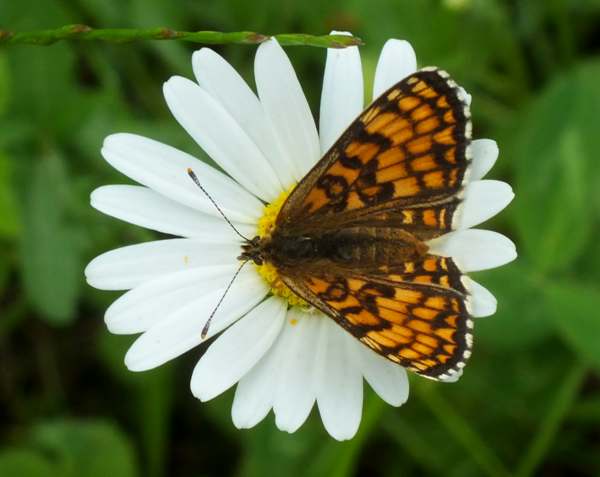
Lifecycle
The primary larval foodplant of Glanville Fritillary is Ribwort Plantain Plantago lanceolata and other plantain species; it is also reported to use Spiked Speedwell Veronica spicata. In Britain the single brood of adults can usually be seen in flight from early May through to early July.

In northern Spain and southern France, where this is a very common species, the adults are usually on the wing from late April to June with a second brood flying in August and September. These butterflies take nectar from a wide range of wildflowers including (as below) various Cistus species.
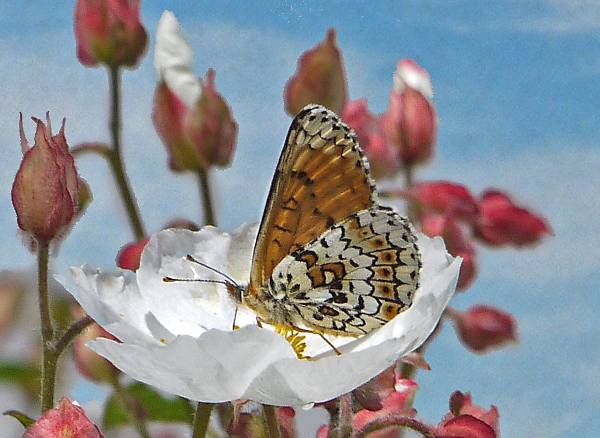
Most of the specimens shown on this page were photographed in central and southern France and in northern Italy.
Acknowledgements
This page includes pictures kindly contributed Betty and Tony Rackham.
Studying butterflies and moths...
Excited by rivers and streams? So are we, and we're pretty sure you would find the Winding River Mystery trilogy of action-packed thrillers gripping reading too. Dead Drift, Dead Cert, and Dead End are Pat O'Reilly's latest river-based novels, and now they are available in ebook format. Full details on our website here...
Buy each volume in ebook format for only £2.47 on Amazon... Paperbacks also available on Amazon at £6.95 each. All proceeds go towards keeping the First Nature website online.
Please Help Us: If you have found this information interesting and useful, please consider helping to keep First Nature online by making a small donation towards the web hosting and internet costs.
Any donations over and above the essential running costs will help support the conservation work of Plantlife, the Rivers Trust and charitable botanic gardens - as do author royalties and publisher proceeds from books by Pat and Sue.